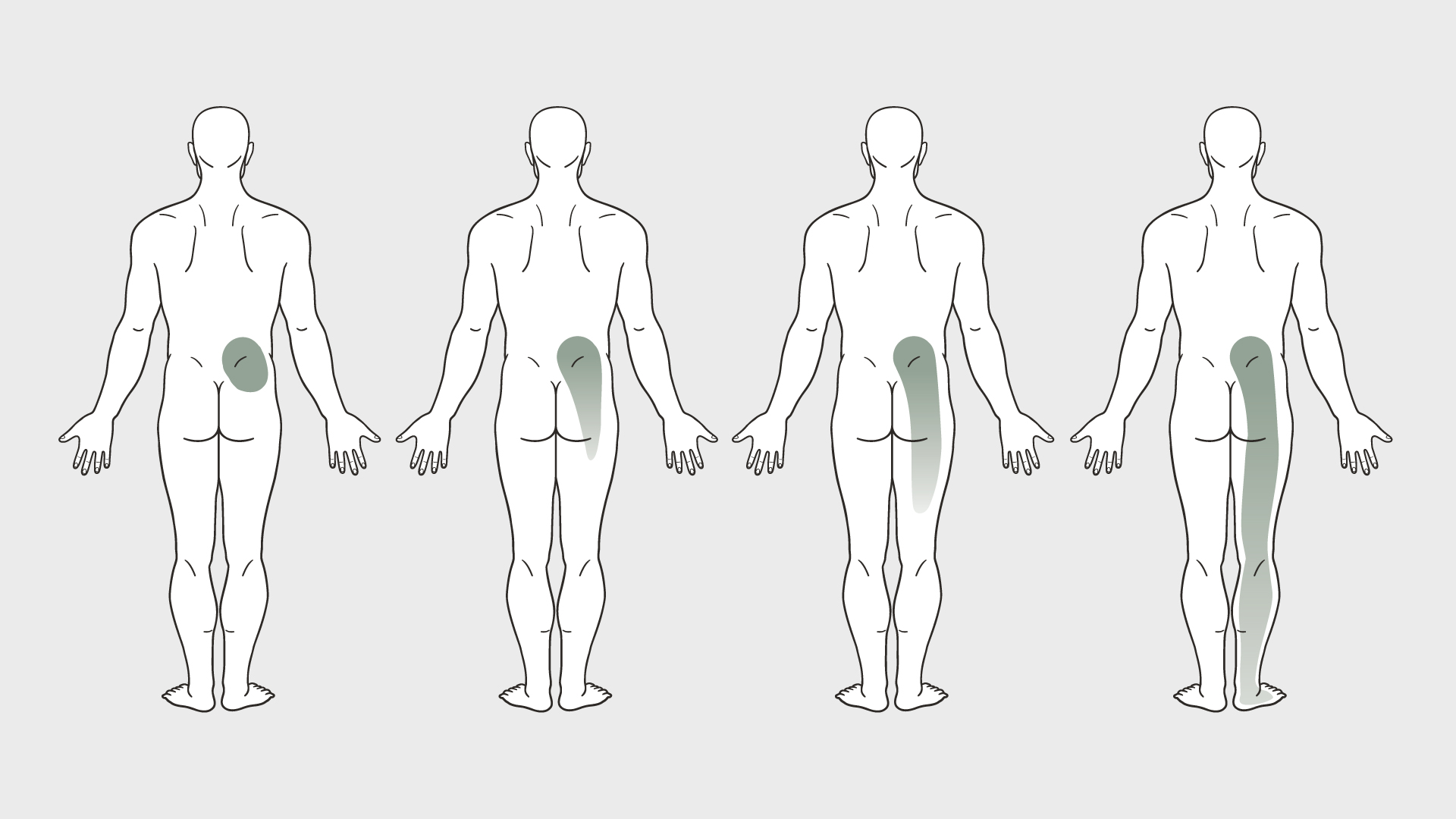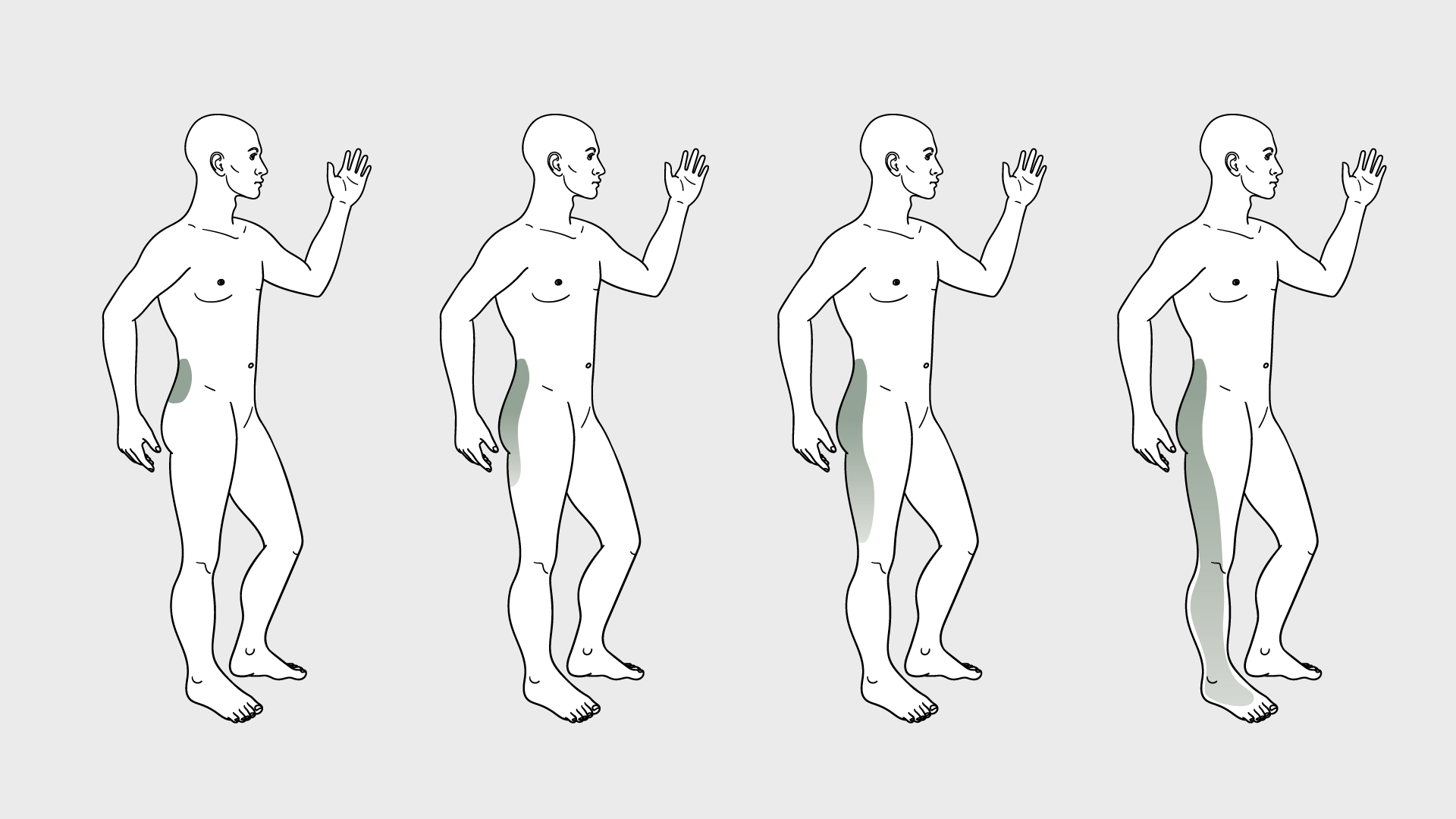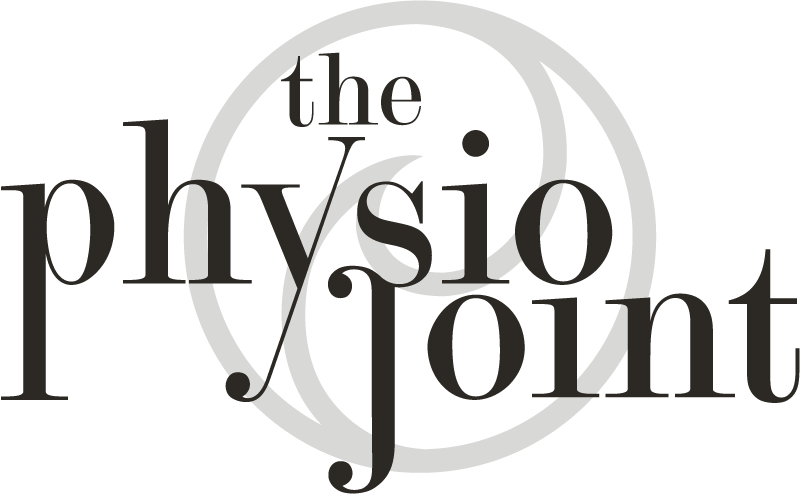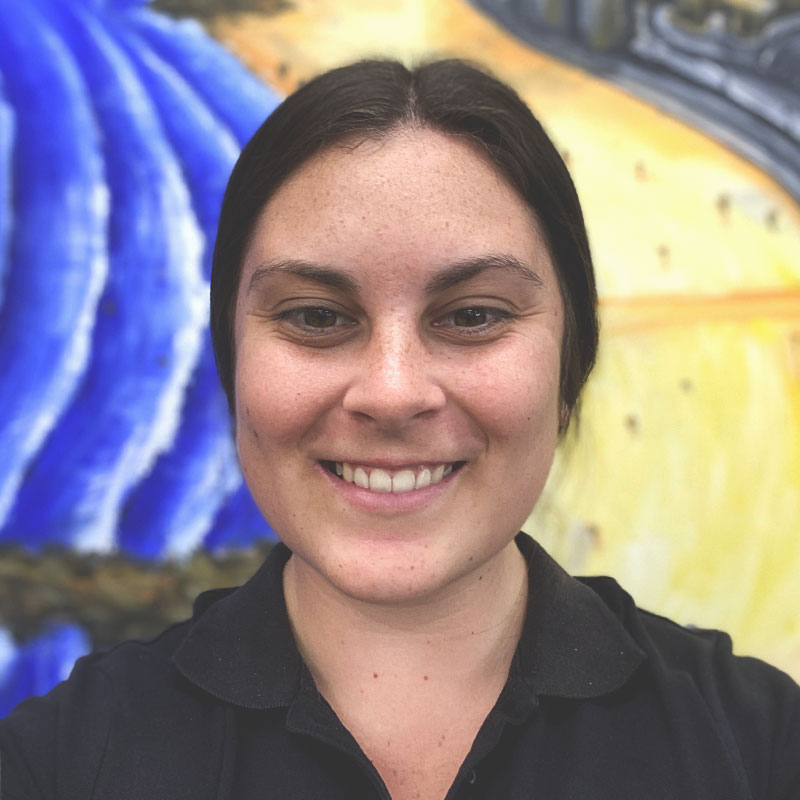Usually, sciatica is a result of strain on soft tissues in the low back over prolonged periods of time. For example, prolonged slouched sitting habits, or repeated and sustained stooping and forward bending habits.
In the first attacks of pain, pains are usually felt in the central low back near the belt-line or just to one side.
People describe sciatica pain in different ways, depending on its cause. Some people describe the pain as sharp, shooting, or jolts of pain. Others use words like “burning,” “electric” or “stabbing.” The pain in the leg may be constant or may come and go. It is usually more severe in the leg compared to the lower back. The pain may feel worse if you sit for long periods of time, when you stand up after prolonged sitting and/or when you twist your back. A forced and sudden body movement, like a cough or sneeze, can also make the pain worse in the leg.
In subsequent attacks pain may extend to the buttock and later to the outside or back of the thigh, down to the knee or below the knee down to the ankle or foot. Less often, pain is felt in the front of the thigh to the knee.


Pain may vary with movement or with position. The intensity of the pain can change or the location of the pain can alter. For example, one movement may cause buttock pain and another may cause the pain to leave the buttock and appear in the low back.
If your problem is severe, in addition to back and leg pain, you may experience significant numbness or muscular weakness in the lower leg.
Typical Symptoms:
- Pain/symptoms in the lower back, buttock, thigh, calf and/or foot
- Pain that worsens with bending and sitting
- Lack of back movement
Relieving Factors:
- Keep gently moving
- Avoid prolonged sitting on low couches and chairs
- Use back supports such as pillows or rolled up towels behind the lower back when sitting
- A physiotherapy assessment is necessary
With a physiotherapy assessment at The Physio Joint, most people achieve at least a 30% improvement in their symptoms within 4 weeks, no matter how serious the presentation.
We will speak with you about your problem for at least 20 minutes to collect data about your presentation. We will then assess your back and leg movement and determine if there are back positions or movements you can do, with support from the physio, to immediately relieve your pain. We will then prescribe the correct movement and exercise self treatment approach with the goal of achieving a significant change in your symptoms within just a few treatments.
If you are experiencing these symptoms, don’t hesitate to BOOK NOW with one of our physiotherapists.




